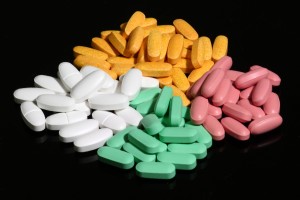 Kentucky was just blasted with a winter storm and while it wasn’t as severe as what D.C. saw, parts of Central Kentucky saw upwards of a foot of snow. All of the north can laugh at how we deal with snow, but it is what it is.
Kentucky was just blasted with a winter storm and while it wasn’t as severe as what D.C. saw, parts of Central Kentucky saw upwards of a foot of snow. All of the north can laugh at how we deal with snow, but it is what it is.
We don’t handle it well.
We shut down.
We hole up in our homes.
However, there are always the places that, no matter what, can’t close. (LockNet is one of those places, but we have the option of working from our homes in emergency situations.)
Pharmacies, on the other hand, are not.
Because pharmacies deal with (literally) life-saving goods, they have to remain open, and that means pharmacy security is a different beast when it comes to protecting their products. Today, we’re going to delve into one of the security measures pharmacies use in order to keep the medications they keep in-house safe.
Pharmacy Security – CII Cabinets
CII cabinets are used in all pharmacies to keep the Schedule II narcotics locked away. The Department of Justice describes Schedule II narcotics as, “The controlled substances in this schedule have a high abuse potential with severe psychological or physical dependence liability, but have accepted medical use in the U.S. CII controlled substances consist of certain narcotic, stimulant, and depressant drugs. Some examples of CII narcotics are: opium, morphine, codeine, hydromorphone (Dilaudid)1, methadone, meperidine (Demerol), cocaine, oxycodone (Percodan), anileridine (Lertine), the immediate precursor phenylacetone (P-2-P), and oxymorphine (Numorphan). Also in CII are the stimulants amphetamine (Dexedrine), methamphetamine (Desoxyn), phenmetrazine (Preludine), and methylphenidate (Ritalin); the depressants amobarbital, pentobarbital, secobarbital; and fentanyl (Sublimaze), etorphine hydrochloride, and phencyclidine (PCP).”
If you don’t speak medicine, those are some pretty serious drugs and they need to be kept under more than the average lock and key. This is why the CII cabinets are so great for pharmacy security.
CII Cabinets and LockNet
CII cabinets are multipoint locking cabinets (similar to a multipoint locking door), which make them especially difficult to break into. They lock at both the top and the bottom of the cabinet door.
They tend to have a proprietary key. This means the key can’t be duplicated and this is done to avoid unauthorized entrance to the cabinet to further ensure the security of the meds inside.
CII cabinets look exactly like a regular locker-type cabinet, but it’s the extra security measures they offer that make them so suitable for pharmacies. Whenever LockNet services these cabinets, they’re immediately classified as emergency calls because we don’t want the contents inside to be unsecure any longer than it has to be.
We service several pharmacies and can answer any questions you might have regarding pharmacy security or the CII cabinets. Give us a call! We’d be happy to help!
